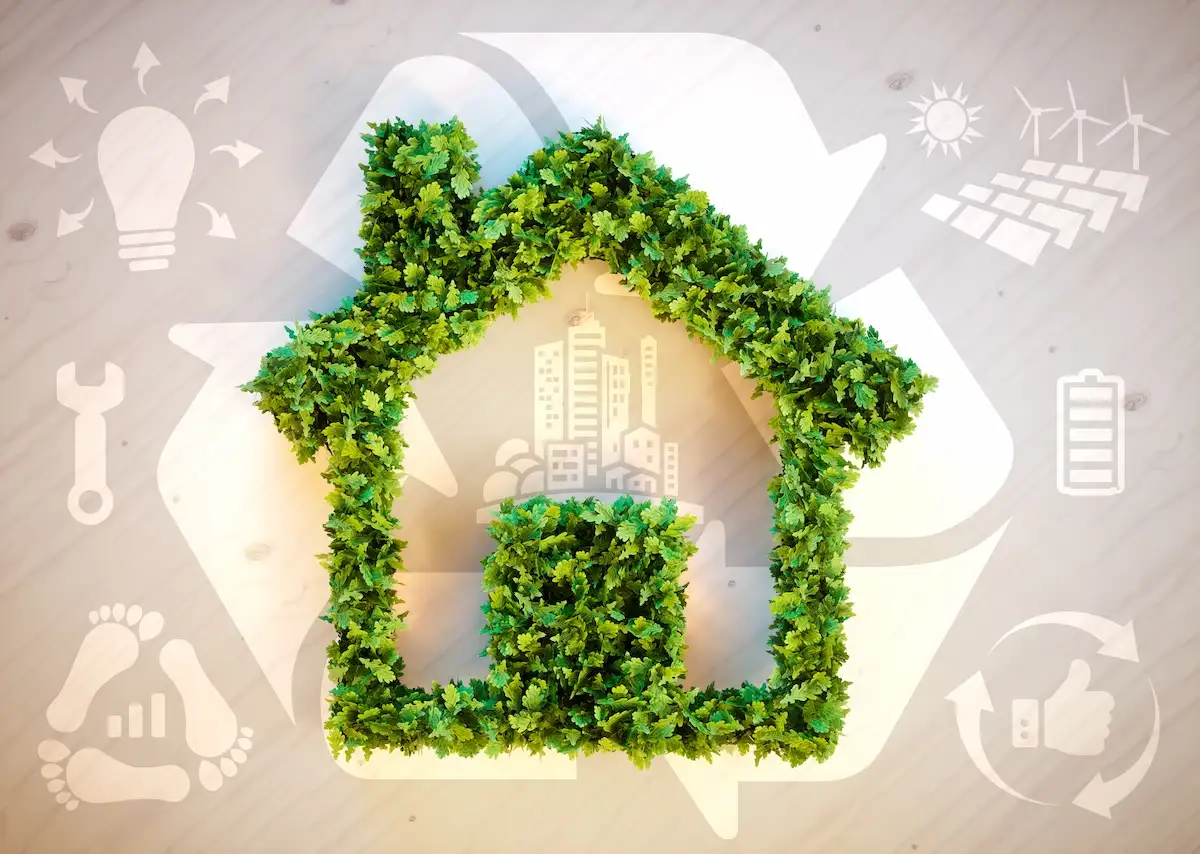Table of Contents
Did you know? There are many ways you can contribute to the environment, one of which is building an eco-friendly home. This concept applies a variety of environmentally friendly principles, making it more sustainable.
This article discusses an eco-friendly house, including its characteristics and how to build it. So, read the complete information below.
What Is an Eco-Friendly House?
An eco-friendly house is a house design that implements energy efficiency, prioritizes the environment, and reduces environmental damage. It focuses on three important things: green spaces that make the home environment fresher, the use of renewable resources, and the utilization of renewable energy. Therefore, you do not rely too much on fossil energy.
As it emphasizes environmental aspects, building this house may seem more complicated. However, the benefits offered are worth your effort in contributing to the environment through this home.
Characteristics of an Eco-Friendly House

An eco-friendly house has several characteristics that differentiate it from conventional houses, such as:
1. Low Energy Design
As mentioned before, an eco-friendly house carries out the energy-efficient concept. Hence, it has a low-energy design. One example of low-energy design is wide windows and doors that allow natural sunlight to enter the house. As a result, you do not need lamps during the day.
During the dry season, you can open your windows to allow fresh wind to enter the house, helping you decrease the use of fans or air conditioners for a whole day.
Yet, if you do not really like the design of wide doors and windows, you can get around it by creating more open spaces, such as in the backyard, terrace, or in the middle of the house.
2. Having Great Drainage and Waste Management

The next characteristic is that the house has great drainage and waste management. An eco-friendly house usually carries out inorganic and organic waste sorting to process it properly.
Not only that, but this house concept also has a better drainage system, in which the household waste is not directly disposed of in the river unprocessed. A good home drainage system needs to fulfill several important tasks, including:
- Separating clean and dirty water.
- Reduces damage to the soil structure.
- Serves as a water conservation area.
- Protects the home environment from poor-quality water.
- Ensuring the home area is free from the risk of flooding, waterlogging, and soil erosion due to water erosion.
3. Using Renewable Energy
An eco-friendly house usually uses renewable energy, like solar panels, to fulfill the electricity needs in the home. That way, you will not fully depend on conventional electricity from fossil energy.
4. Utilizing Energy-Saving Lamps
The next characteristic is using energy-saving lamps, like LED lamps, to make it more environmentally friendly. This type of energy-saving lamp can help you reduce electricity consumption and cost.
5. Having a Green and Open Area
Green and open space can improve air circulation at home, making the house less humid and hot. You can open the area in the backyard, around the house, or on the front porch.
However, if your house does not have enough area to be used as a garden, you can create a small space at the back of the house with various plants and use a see-through roof with enough cavities.
6. Utilizing Eco-Friendly House Materials
An eco-friendly house is built using environmentally friendly materials, such as recycled materials. Although you are using recycled materials, make sure to choose quality-assured materials. Additionally, you also need to consider the material content and ensure that they are safe for your family.
Read also: How to Carry Out Household Waste Management in 8 Ways
Advantages of an Eco-Friendly House
The concept of the eco-friendly house brings several advantages for the environment and the dwellers, such as:
1. Reducing Carbon Footprint
The first benefit is reducing the carbon footprint. For your information, your activity at home can emit carbon emissions. Some of the examples are using conventional electricity from fossil energy and utilizing gas or oil heaters.
Moreover, data from the UN Environment Program shows that 40% of the global carbon emissions come from residential sectors, in which 70% comes from building operations and 30% comes from the construction process.
Thus, by building an eco-friendly house, you can reduce carbon emissions from the construction and household sectors.
2. Decreasing Electricity Use
In addition to preventing climate change and carbon emissions, decreasing the use of electricity can lower your household costs. Some efforts you can make are utilizing sunlight as natural lighting during the day and a source of electricity processed by solar panels, as well as applying a high ceiling to increase air circulation.
3. Conserving the Ecosystem
Constructing an eco-friendly house can help you conserve the ecosystem. To build your house, you will use environmentally friendly materials whose waste does not pollute the environment.
Furthermore, your house has proper waste management, preventing water and land pollution. Then, the green area in your house can act as a new ecosystem for small animals and various plants.
Read also: Benefits of Eco-Enzymes and How to Make Them Easily at Home
How to Build an Eco-Friendly House

If you are interested in building an eco-friendly house, here are some tips for you to consider:
1. Choosing the Right Location
Firstly, you can determine the right location. To reduce the use of private vehicles, you can choose a location close to public transportation. In addition, you can also select a location with sufficient sunlight exposure that you can use as natural lighting.
2. Reducing the Use of Room Dividers
You might want to make your home more private by adding some room dividers. Yet, you had better reduce the use of room dividers to make the air circulation better.
Furthermore, too many room dividers make your home look more cramped and require more lighting, as the sunlight cannot reach the entire space. As a result, you may need more lights and air conditioning.
3. Utilizing Renewable Energy
To reduce the reliance on fossil energy, you can use wind turbines and solar panels. Both use renewable energy, which is wind and sunlight, to generate electricity.
4. Creating Gardens
A garden brings refreshment to your home. Even if you only have a little land left, you can still create a green open space to put some ornamental plants or create a small vegetable field. In fact, your garden can even reduce emissions.
Research done in California and published on Urban and Landscape Planning revealed that a garden made to plant vegetables at home in urban areas in California had lower emissions of up to 2 kg per kilogram of vegetables compared to the greens bought in groceries.
This is because homegrown vegetables do not go through the distribution process, which often contributes to carbon emissions, just like regular vegetables sold in supermarkets.
When harvest time comes, you only need to pick the vegetables. On the other hand, if you buy vegetables at the grocery store, you need to leave the house first with a vehicle. Not only that, to get to the supermarket, vegetables have to go through a series of transportation processes.
That’s why grocery vegetables may have more carbon emissions than homegrown vegetables. Additionally, you can also save money on household expenses because you do not have to buy vegetables.
That concludes the information about an eco-friendly house. This house concept does not only make you comfortable but also preserves the surrounding environment.
Moreover, if you want to contribute more to the environment, you can join Indonesia Asri. Indonesia Asri has a campaign of #SiPalingSustainable that you can take part in for the fun challenges of implementing a sustainable lifestyle.
Register yourself now and be part of Warga Asri for a greener environment!
Read also: Benefits of Ornamental Plants for a Greener Home, Take Note!








